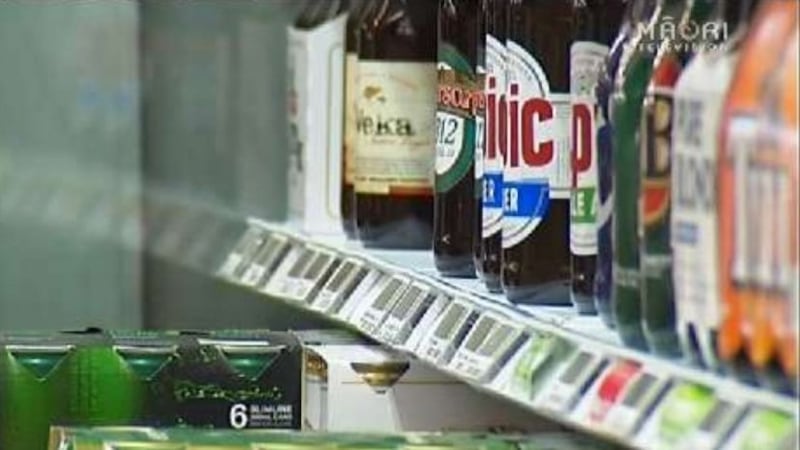This article was first published by RNZ.
Internal police documents say alcohol creates 20 times the harm of meth but police deploy less than one percent of their staff on reducing its harm.
Documents obtained by RNZ under the Official Information Act (OIA) show police estimate the harm from alcohol to be about $7.8 billion a year, compared to $1.8 billion for illegal drugs.
In an interview with RNZ, Police Commissioner Andrew Coster defended police resourcing of alcohol harm reduction, saying police had limited influence over much of the damage being done.
Coster told RNZ that new measures should be considered, including allowing bottle stores to only open during day time hours and raising the price of alcohol.
One document, a presentation to the Southern Police District Leadership Team, says the social cost of amphetamines is $365m and so “alcohol causes 21.5 times the harm of meth”.
But of New Zealand’s 10,000 police officers just 84 are Alcohol Harm Prevention Officers (AHPO) - or 0.84 percent of the workforce.
Of those 84, just 37 are full-time, and the other 47 do alcohol harm prevention work alongside other duties, such as community or rural policing.
Police National Headquarters employs 4000 staff but has only three full-time positions in alcohol harm prevention, one of which is vacant.
Coster said alcohol was a key contributing factor in crimes of violence, homicide and family abuse.
“It’s a very significant driver of harm,” he said.
The estimates in the police documents obtained by RNZ that alcohol caused about $8 billion of social harm a year “feels about right in terms of the level of harm we see out there as a result of alcohol”.
While most pubs and on-licensed venues were “relatively well controlled” about 85 percent of alcohol was sold from bottle stores, supermarkets and other off-licensed premises.
“The biggest difficulty we have is that you can go to an off-licence premise, which in some areas are more prevalent than corner dairies, and buy a large quantity of very cheap alcohol. There’s no offence in that.”
Coster said it wasn’t his job to be advocating for law changes but the country needed to consider what sacrifices it was prepared to make to reduce alcohol harm.
“I enjoy a beer as much as the next person. I would be prepared to have some trade offs there in order to see less alcohol related harm.”

Those trade offs could include alcohol availability and pricing.
“Do we need to be able to go to an off-licence late into the evening to be able to secure more alcohol or would it be okay if we had to buy alcohol during daytime hours? Because we know that restocking is one of the features of harmful drinking,” Coster said.
“Are we prepared to have any limits on the price of alcohol, that would make it less accessible for excessive drinking? That’s a similar methodology that’s been applied with smoking and has had a positive effect in terms of reducing harm.”
No budget for alcohol harm prevention
Despite the billions of dollars in harm, and its huge contribution to crime, there is not even a police budget for alcohol harm prevention.
RNZ asked for police expenditure on alcohol harm prevention for the last two years. In its response, police listed just $66,155 in spending - mostly on attending conferences in 2022 and 2023.
Documents released to RNZ show police had to apply to the Ministry of Health for money to train their staff on reducing alcohol harm because there was no budget for them to fund it themselves.
In a 2022 application to the Ministry of Health, the head of the police alcohol harm reduction unit says the total police budget is $2.5 billion but “no operating budget is available to me for my workgroup”.
The police documents describe the extent of alcohol-related harm and the lack of expertise to address it.
“The more deprived areas are particularly over-represented with licensed premises providing cheap and easy access to alcohol with significant levels of alcohol related harm occurring,” the documents say. “Those communities lack an effective voice in licensing decisions.”
Police say their own staff have a “lack of knowledge about [alcohol licensing] hearing preparation and management” and require training so police can provide “better advocacy for the community’s benefit overall.”
The documents lay out the caseload for Alcohol Harm Prevention Officers (AHPOs) using the Coastal Otago region as an example.
They show the region’s single AHPO deals with an annual workload of 1210 liquor licensing applications - all of which must be replied to within 15 working days.
“AHPOs do the vetting of licence and managers’ applications, they oppose and take enforcement applications against those in the industry causing harm to our communities,” the police documents say. “They drive alcohol harm reducing initiatives in our communities, working with schools, universities and the alcohol industry.”
Alcohol Healthwatch executive director Andrew Galloway said the documents made it clear police were not putting enough resources into reducing alcohol harm.
The absence of a specific police budget for alcohol harm reduction was “alarming”.
Police could significantly reduce harm by targeting bottle stores that supply to problem drinkers or sell single serve cans of high strength alcohol.
“Traffic offences, property offences, sexual offending, violence: these are massive problems which will have an impact on social and health services as well,” Galloway said.
The figures obtained by RNZ showed police were not taking alcohol harm seriously enough.
“I think this will call out the big issue of the lack of resources so I really do hope that they respond.”
- RNZ
